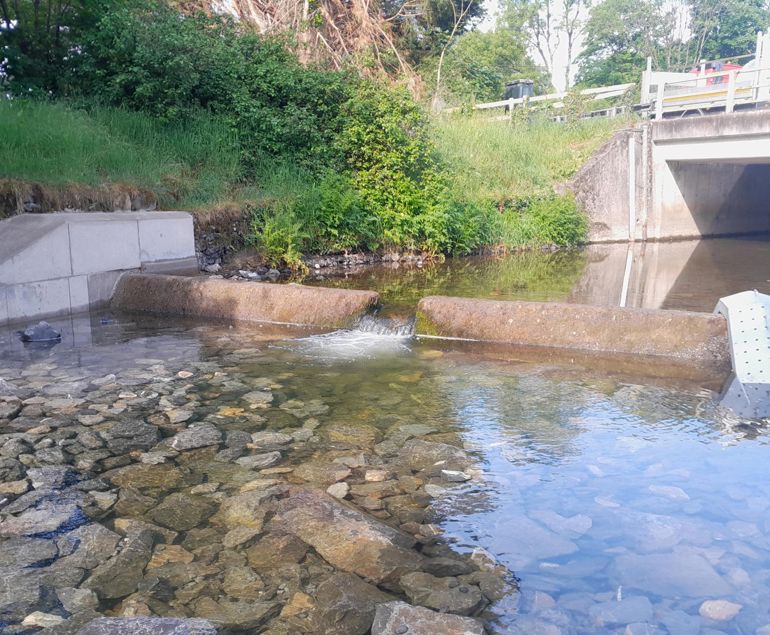More than eight miles of the River Dulais is unlocked for fish

Natural Resources Wales’s (NRW) Four Rivers for LIFE project has completed an additional fish pass on the Llanwrda Dulais, an important salmon and trout spawning tributary of the River Tywi.
This is the third fish pass improvement scheme to be installed on this stretch of river, meaning more than eight miles will now be accessible for migratory fish.
The height of the weir and the fast flows overs it, made it a significant barrier to salmon and sea trout. It was also largely impassable to eel and lamprey under most flow conditions given that, unlike salmon, these species are unable to jump.
The weir - located downstream from the A40 road bridge near Llanwrda - plays a crucial role in stabilising the riverbed and protects the bridge footings upstream, so its removal was not an option.
The work to create a rock ramp to eliminate the vertical jump at the weir was carried out in May this year, and took only three weeks to complete.
The design included a series of four blockstone “steps” or bed checks along a 50metre stretch of river immediately downstream of the weir. The design aims to break up the approximate 60cm head drop at the weir face into a series of smaller 15cm steps.
This underlying “step” structure was filled in with boulders, riprap (crushed rock material used primarily for erosion control) and gravel to create a naturalised bed with a low flow channel towards the centre of the river.
An additional ramp with studded tiles was fitted to the weir at one side to provide an alternative route for weaker swimming fish like eel and lamprey.
Peter Jones from the Four Rivers for LIFE Project said: “The vertical drop from the original notch on the weir is essentially eliminated, which means the weir no longer presents a barrier to salmon or sea trout and should also be passable for eel and lamprey during most flows.”
“The varied boulders and gravel now in the river will provide excellent refuge habitat for species such as eel. The riprap infill has helped to combat the significant scour issues at the base of the weir, thus protecting the South Wales Trunk Road Agency’s asset in the long term.”
This scheme is a culmination of work done along this same stretch of river from two other fish passes up and downstream.
In 2024, the Four Rivers for LIFE project completed a similar scheme on a railway bridge weir downstream from this recently completed work.
Previously in 2023, NRW’s Salmon for Tomorrow project completed a Larinier fish pass on a weir upstream from this scheme. The combined benefits of these three schemes will open up more than eight miles of valuable river habitat on the Dulais.
Tributaries often represent the main spawning areas in rivers so restoring access is vital to reversing the decline in freshwater fish populations and improving ecological resilience to future environmental change.
The Four Rivers for LIFE Project is funded by the EU LIFE Programme with support from Welsh Government and Welsh Water.
